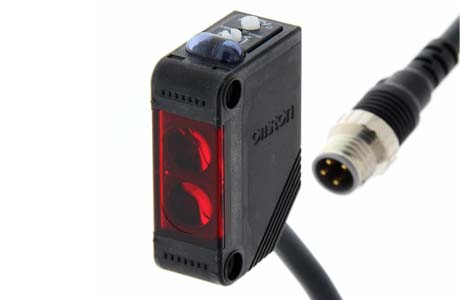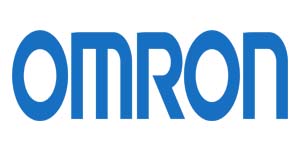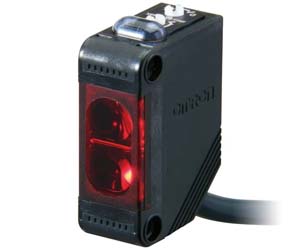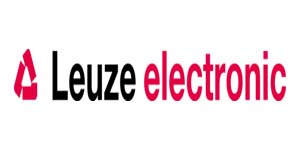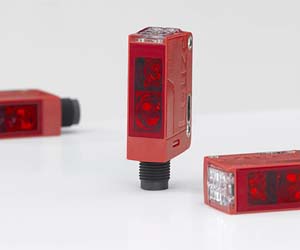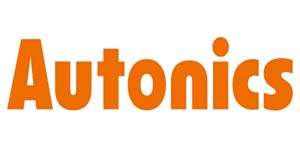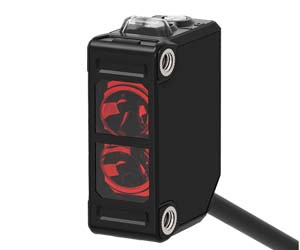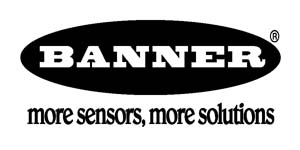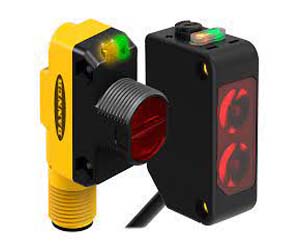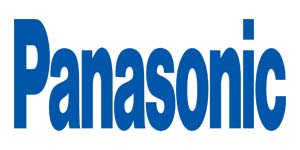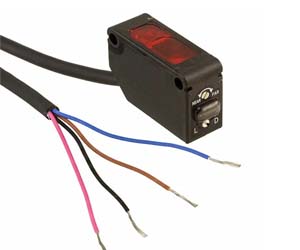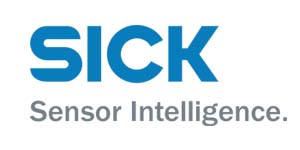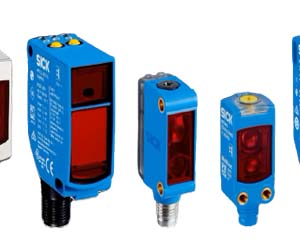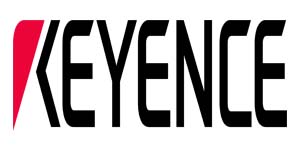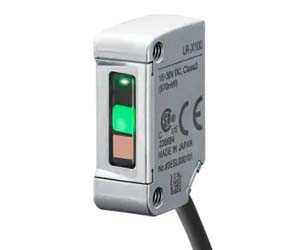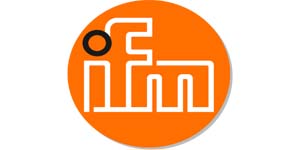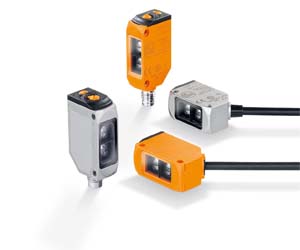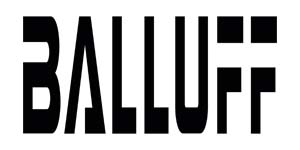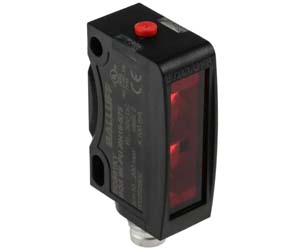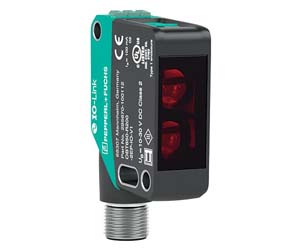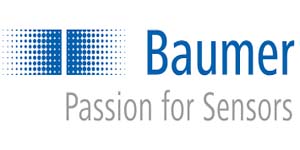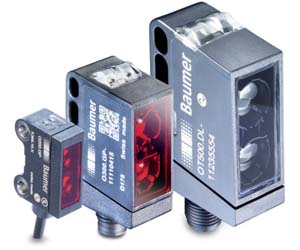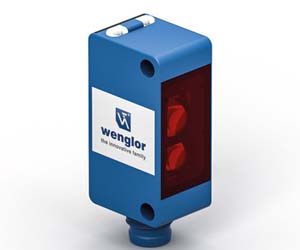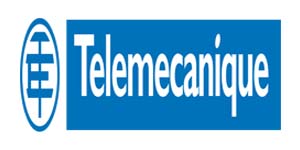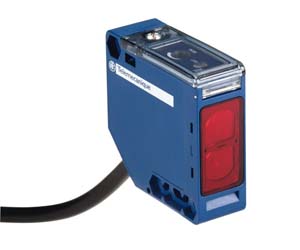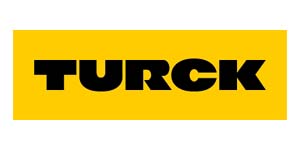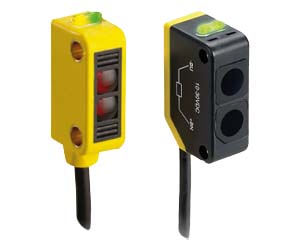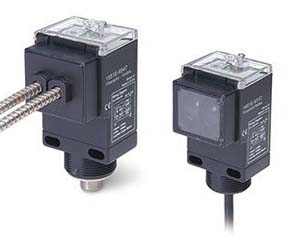Top 15 Photoelectric Sensor Manufacturers
We have compiled a list of over 50 photoelectric sensor manufacturers, selected after extensive market research and based on the popularity of brands on searches for specific brands, as well as their prevalence in the market.
We know these companies make good sensors because we’ve seen how much people like their products. We even help sell them.
You can find the best photoelectric sensors from these top makers. They’re famous for making really good sensors that people trust.
We’ve looked at all the information and chosen the best companies that make photo sensors. Now, we’re excited to tell you who they are. These are the “Top Photoelectric Sensor Manufacturers.”
Now it’s time to share who are “The Best & Top 15 Photoelectric Sensor Manufacturers ”
Let’s Start!
Table Of Content
List of 15 Photoelectric Sensor Manufacturers
1. Omron Photoelectric Sensor
Omron Corporation is a Japanese electronics company based in Kyoto, Japan, founded in 1933 by Kazuma Tateishi. The company specializes in industrial automation.
Omron offers a wide range of photoelectric sensors designed to meet the needs of various applications in automation and process control. These Omron photo sensors are categorized into three main types: separate amplifier, built-in amplifier, and built-in power supply.
Separate amplifier photoelectric sensors, such as the Smart Laser Sensors (E3NC), Omron Photoelectric Switch with Separate Digital Amplifier (E3C-LDA_N), Compact Head Amplifier-separated Photoelectric Sensor (E3C), and Small Spot/Mark (E3C-VS / VM), offer flexibility in installation and adjustment, as the amplifier and sensor head are separated.
Built-in amplifier photoelectric sensors, such as the Distance-settable Photoelectric Sensor (E3AS Series), Oil-resistant Photoelectric Sensors (E3ZR-C), IO-Link Photoelectric Sensor (E3Z-_-IL_), and Color Mark Photoelectric Sensor (E3S-DC), have the amplifier built into the sensor head, providing a compact and efficient solution for various applications.
Built-in power supply photoelectric sensors, such as the Built-in Power Supply Photoelectric Sensor (E3JK) and Built-in Power Supply Photoelectric Sensor (E3JM), support a wide range of AC or DC power supplies, contributing to overall cost reduction.
To know more about Omron Automation: Visit
Website: https://www.ia.omron.com/
2. Leuze Photoelectronic Sensor
Leuze Electronic GmbH + Co. KG, based in Owen, Germany, is a family-owned company that specializes in sensor technology and safety solutions for industrial automation.
Leuze photoelectric sensor comes in a variety of types, including through-beam sensors, retro-reflective sensors, and diffuse sensors, to cater to the specific needs of different industrial applications.
Leuze Through-beam photoelectric sensors consist of separate transmitters and receivers, with detection occurring when the light beam is interrupted by an object. These sensors are suitable for detecting small and fast-moving objects, with operating ranges of up to 120 meters.
Leuze Retro-reflective photoelectric sensors have the transmitter and receiver in the same housing, with detection occurring when light is reflected back from a reflector. These sensors are ideal for transparent object detection and have operating ranges of up to 15 meters.
Leuze Diffuse sensors have a sender and receiver together. They detect objects when light bounces back to them. Leuze Photo sensor is suitable for detecting objects with varying colors and surfaces, with operating ranges of up to 3 meters.
Website: https://www.leuze.com/
3. Autonics Photoelectric Sensor
Autonics Corporation is based in Busan, South Korea, and was started in 1977. Autonics is known for making a wide range of automation products that help different industries around the world.
The BUP Series U-Shaped Autonics Photoelectric Sensors are available in 30 mm and 50 mm sensing distance models, with adjustable sensitivity to cater to various applications. They feature a high-speed response time of under 1 ms.
The BJX Series Compact Long Distance Autonics Photo Sensor is equipped with high-performance lenses that provide long sensing distances of up to 30 m. These sensors are designed to offer excellent noise immunity and minimal influence from ambient light, ensuring accurate and reliable presence detection.
The BRQ Series Cylindrical Photoelectric Sensors are available in various sensing sides, housing materials, and body sizes, making them suitable for diverse environments.
They offer long detection distances of up to 30 m and are known for their accurate sensing performance.
The BJP Series Photoelectric Sensors are specifically designed for detecting printed circuit boards (PCB) with a 30 mm x 3 mm rectangular light beam and background suppression (BGS) sensing method.
The BJR Series Oil-Resistant/Oil-Proof Photoelectric Sensors are optimized for use in environments with cutting oil and lubricants, such as the automotive and machine tool industries. They are capable of long-distance detection up to 15 m.
Here you can Autonics Products
Website: https://www.autonics.com/
5. Panasonic Photoelectric Sensor
Panasonic, a Japanese multinational company, is a leader in the automation sector, offering advanced solutions in industrial systems and components. headquartered in Kadoma, Osaka, Founded in 1918. Their automation products are designed to enhance efficiency and productivity across various industries.
Panasonic’s Ultra-minute Photoelectric Sensor EX-Z series stands out for its compactness, claiming the title of the world’s smallest photoelectric sensor with a built-in amplifier as of April 2017. These sensors are designed to fit into narrow spaces where previously only fiber sensor heads could be installed.
The EX-Z series boasts a thin profile of just 3 mm, achieved through advanced semiconductor packaging technology. They are capable of detecting extremely small objects, such as a ø0.3 mm object without a slit, making them industry leaders in small-object sensing capability.
Additionally, they offer long-distance sensing up to 500 mm for small ø1.0 mm objects, with a visible spotlight for easy position confirmation. The sensors are also designed with an IP67 protective structure, making them suitable for use in environments where they may be exposed to water. Panasonic provides a range of mounting brackets and options to ensure flexibility across various applications.
Website: https://industrial.panasonic.com/ww
6. Sick Photoelectric Sensor
SICK AG, founded in 1946 in Waldkirch, Germany, specializes in industrial sensors for factory, logistics, and process automation. With a workforce of 11,909, it generated €2.2 billion in 2022, reflecting its status as a leading sensor manufacturer and a top employer in Germany.
The Sick photoelectric sensor includes a sick retro-reflective sensor, sick diffuse sensor, and sick through beam sensors that are engineered for precision and durability. They use SICK’s own SIRIC® and LED technologies to work reliably, even when there are things that could interfere, like strong light or electromagnetic fields.
Sick photo sensors are very versatile and can detect all kinds of objects, no matter if they are dark, transparent, fast, small, or have an uneven surface. They are tough and can handle rough conditions like dust, extreme temperatures, and even chemicals.
SICK’s sensors meet all the important industry standards and go beyond what’s legally required. They come in different sizes and materials, and they are easy to set up. Laser technology in these sensors makes them perfect for detecting very small objects or working in difficult conditions. They can even detect through tiny holes. SICK’s sensors are quick to install, saving time and money.
Here is more about Sick Sensor
Website: https://www.sick.com/
7. Keyence Photoelectric Sensor
Keyence Corporation is a Japanese company specializing in factory automation, sensors, and measuring instruments. Founded in 1974 and headquartered in Osaka, Keyence has become a global force in providing innovative solutions for manufacturing and research.
Keyence photoelectric sensors are an excellent choice for companies looking to upgrade their sensing capabilities. The PZ-G series sensors are user-friendly, with a simple, one-touch calibration and a rugged, metal housing that stands up to tough conditions.
The PZ-V/M series offers high performance with a visible red beam that makes alignment easy, even at long distances. For environments where sensors face harsh conditions, the PS-N series provides a durable option with high environmental resistance, suitable for tight spaces and demanding applications. Lastly, the PX series is built for heavy-duty use, resistant to water and oil, and capable of long-range detection up to 40 meters, even through obstructions like dust and grease.
Keyence sensors are not just tough; they are also smart. They come with features that make them easy to install and use. For example, they have different modes for different situations, like a power mode for detecting dark or transparent objects and a fine mode for high precision. They also have a wide range of models to choose from, so you can find the right sensor for your specific needs, whether you need something small and compact or something that can handle extreme temperatures and chemicals.
Website: https://www.keyence.co.in/
8. IFM Photoelectric Sensor
IFM is headquartered in Essen, Germany, and operates globally, providing innovative sensor technology and automation solutions to customers across various industries. They offer a 5-year warranty on products, emphasizing their commitment to reliability and customer satisfaction.
IFM photoelectric sensors are available in several types, including through-beam, retro-reflective, and diffuse sensors, each tailored for specific industrial tasks.
IFM through-beam sensors are used for Clear sending and receiving units, ensuring accurate detection when an object interrupts the light beam. This IFM photoelectric sensor excels in identifying small or fast-moving items and can operate over distances up to 60 meters.
IFM retro-reflective sensors combine the sending and receiving elements into one device. using a reflector to bounce the light back for detection.
These are particularly effective for transparent object detection, with ranges up to 10.5 meters. IFM diffuse sensors combine the transmitter and receiver, detecting objects when light is reflected directly back to the sensor. These are versatile for recognizing objects of different colors and surfaces, with sensing ranges up to 2.5 meters.
Each IFM photo sensor is manual for easy installation and alignment, often featuring visible light for setup. They come equipped with LED indicators for operational status and are designed for quick configuration, enhancing efficiency in various industrial environments
Website: https://www.ifm.com/
9.Balluff photoelectric sensor
Balluff GmbH is a global provider of automation solutions and one of the leading manufacturers of sensor technology. Founded in 1921 as a mechanical repair workshop, the family-run company, now in its fourth generation, is headquartered in Neuhausen auf den Fildern, Germany.
Balluff photoelectric sensors are designed to be highly versatile and reliable for a wide range of industrial applications. They are engineered to detect the presence, shape, color, distance, and thickness with high precision, making them suitable for robotics, automation, assembly, and handling tasks. These sensors come in various forms, including diffuse sensors, retro-reflective sensors, and through-beam sensors, each designed for particular tasks.
Diffuse sensors from Balluff are ideal for detecting contrast differences and are economical and straightforward to mount due to their visible light beams. They are particularly effective for shorter ranges compared to other types. For more challenging detection scenarios, Balluff Photo Sensors offers diffuse sensors with background suppression, which can
accurately identify items even when they blend into backgrounds or when dark objects are in front of bright areas.
Retro-reflective sensors by Balluff Photoelectric Sensor ensure reliable detection regardless of surface, color, and material, and are simple to align thanks to their generous mounting tolerances. They come with large reflectors for high ranges and are also available with pole filters suitable for detecting shiny objects.
Balluff through-beam sensors are perfect for positioning tasks due to their excellent reproducibility. They are extremely resistant to contamination and are ideal for large operating ranges, with the transmitter and receiver housed separately.
Website: https://www.balluff.com/
10.Pepperl+Fuchs Photoelectric Sensor
Pepperl+Fuchs is a German multinational company headquartered in Mannheim, Germany. Founded in 1945 by Walter Pepperl and Ludwig Fuchs. It specializes in manufacturing products for fabrication and process automation, with a focus on sensor manufacturing.
P&F Sensors offers a wide range of photoelectric sensors designed for various applications in automation and process control. These sensors are categorized into different types, including thru-beam photo sensors, retroreflective photo sensors, diffuse mode photo sensors, and special sensors.
Thru-beam photoelectric sensors are highly efficient and provide long sensing ranges and high excess gain. They are reliable in foggy, dusty, and dirty environments. The sensors come in different series, such as M100, LA31, LD31, and OBE20M each with specific features catering to different needs.
Retroreflective photoelectric sensors are ideal for sensing glossy or shiny objects and clear object detection. They are commonly used in the packaging and printing industries. Some of the Series available include ML100, RLK31, RL28, and OBR12M
Diffuse mode photoelectric sensors are available in background suppression, foreground suppression, and background evaluation models. These sensors are suitable for various applications, including detecting objects with different colors and materials. Some of the models include ML100, RL29, and RLK31.
You want to check more about Pepperl Fuchs Automation Products.
Website: https://www.pepperl-fuchs.com/
11.Baumer photoelectric sensor
Baumer Group, headquartered in Frauenfeld, Switzerland, is a global Swiss enterprise specializing in sensor technology. Founded in 1952, it has grown to employ around 2,900 people across 39 subsidiaries in 19 countries, focusing on components and systems for factory and process automation.
The Baumer photoelectric sensor is great at spotting and placing things exactly where they need to be, which is really important for lots of different tasks in factories. They are small enough to fit into tight spots, so you can use them in many places. Plus, they are easy to set up – you just plug them in and start using them.
The O200 series of Baumer photo sensors are particularly small, with some models as tiny as 8 mm. Despite their size, they can detect objects from a close range of up to 200 mm for Baumer diffuse sensors and up to 6 meters for Baumer through-beam sensors. This makes them ideal for situations where space is limited but performance cannot be compromised.
For tasks that demand extra power, Baumer’s O300 and O500 series photoelectric sensors come into play. These Baumer Photo sensors are equipped with a robust microcontroller and provide seven different sensing principles, ensuring they can handle a wide array of detection tasks. They are also ready for the future, with Industry 4.0 compatibility through IO-Link technology.
The OT300 and OT500 series of Baumer photo sensors use time-of-flight technology to detect objects at longer distances, up to 2.6 meters away. This feature is particularly useful for applications where the sensor cannot be placed close to the target. Moreover, these sensors maintain their reliability even when dealing with objects that have challenging properties. Baumer photoelectric sensors are built to work reliably in many different kinds of industrial settings.
Website: https://www.baumer.com/
12. Wenglor photoelectric sensor
Wenglor Sensoric GmbH, headquartered in Tettnang, Germany, is an innovative family-owned company specializing in smart sensor and image processing technologies. Founded in 1983, Wenglor has grown into a global player in automation, offering a wide range of sensor solutions.
Wenglor makes photoelectric sensors that are easy to use and work well for many different Tasks in factories. They are great at spotting things, telling colors apart, measuring how far away something is, and figuring out the size of objects. This is really important for machines that work by themselves, put things together, or handle materials. Wenglor offers different kinds of sensors like diffuse sensors, retro-reflective sensors, and through-beam sensors, each made for a certain function.
Wenglor Diffuse sensors are particularly effective for short-range detection, thanks to their visible light beams which make them economical and easy to install. For more complex detection scenarios, Wenglor photo sensors with background suppression are capable of
pinpointing objects even when they are hard to see because they match the area around them or when dark items are in front of light areas.
Wenglor retro-reflective sensors can spot things well, no matter their surface, color, or material. They’re easy to set up because they can be mounted in different ways. These sensors have big reflectors to detect things from far away and can also have special filters to see shiny things better.
Wenglor through-beam photo sensors are ideal for jobs that need very accurate placement. They are very good at not getting confused by dirt and can work over long distances because the part that sends the light and the part that receives it are kept in different places.
In every application, Wenglor photoelectric sensors stand out for their robustness and precision, making them a preferred choice in the automation industry.
Website: https://www.wenglor.com/
13. Telemecanique Photoelectric Sensor
Telemecanique founded in 1924 in Nanterre, France, by Michel Le Gouellec, became a core brand of Schneider Electric, specializing in industrial process automation. In 2009, most Telemecanique products were integrated into Schneider Electric’s portfolio, with the sensor division continuing under Telemecanique Sensors.
Telemecanique Sensors, with over 45 years of expertise, specializes in photoelectric sensors that are integral to automation. Their XU range offers a diverse array of sensors, including the innovative XUY roller conveyor sensor, designed to meet the demands of various industries such as material handling, packaging, and food & beverage processing.
These Telemecanique photoelectric sensors come in several modes to suit different operational needs. The Diffuse mode sensors can detect objects without a reflector, while Background Suppression sensors ignore backgrounds to focus on the target. Polarized reflex sensors are great for shiny surfaces, and through-beam sensors excel in detecting objects passing between a separate emitter and receiver.
Telemecanique photo sensors are user-friendly, offering easy setup and integration into existing systems. They are built to withstand challenging industrial environments, ensuring reliable performance and longevity. Whether it’s detecting tiny parts, ensuring safety on a production line, or sorting packages, these sensors provide the eyes for automation systems to operate efficiently.
14. Turck photoelectric sensor
Turck is a German industrial automation company, founded in 1965. With headquarters in Mülheim and der Ruhr, it specializes in sensor, Fieldbus, interface, and connection technology. Managed by Hans Turck GmbH & Co. KG for sales and Werner Turck GmbH & Co. KG for production.
Turck photoelectric sensors are designed to detect a wide range of objects without contact, using visible or infrared light. These sensors are versatile, catering to various applications due to their ability to sense different materials, qualities, and consistencies. Turck offers a broad spectrum of photoelectric sensors, including contrast sensors, diffuse mode sensors with adjustable or fixed-field background suppression, and retroreflective sensors with polarizing filters.
The maximum range of these Turck photo sensors varies greatly, accommodating distances from 25 mm up to 300,000 mm, which demonstrates the adaptability of Turck photo sensor to both close-range and long-range detection tasks.
Turck’s commitment to innovation is evident in their photoelectric sensors for the food industry, which are built to withstand harsh cleaning processes, and their robust photoelectric sensors range, which is designed to operate reliably in challenging industrial environments. This focus on durability and precision makes Turck photoelectric sensors a reliable choice for various industrial applications.
Website: https://www.turck.com/
15. Eaton photoelectric sensor
Eaton Corporation is a multinational power management company, founded in 1911 with headquarters in Dublin, Ireland, and an operational base in Ohio, USA.
Eaton photoelectric sensors are tough and flexible tools for many kinds of factory work. They include different types like the E65 SM Compact, E67 Long Range PerfectProx, E71 NanoView Miniature, Enhanced 50, Prism 18mm Tubular, and Comet 18mm Tubular. These photo sensors are really good at noticing things like where something is, what color it is, and how far away it is. This is super important for machines that do automated Tasks.
The Prism and Comet sensors are really special because they are shaped like small tubes and can do a lot of different functions. The Prism ones have a bright red light that makes them easy to set up and they can handle being knocked around without breaking. This means they keep working well even when things get rough.
The Comet sensors are smart because they can focus on what they need to see and ignore everything else. They come in different styles to meet any need and are tough enough to not get messed up by shaking, loud noises, or other rough conditions.
In simple words, Eaton’s sensors, like the Eaton photoelectric sensor, are like eyes for machines. They help machines notice and understand things around them. This makes them perfect for places like factories, where machines need to be spot-on and dependable.
Website: https://www.eaton.com/
Conclusion:
As we conclude our journey through the “Top Photoelectric Sensor Manufacturers,” I hope you’ve found the information valuable. Many of these top-tier brands stand out for allowing customers to buy materials straight from them and Some brands we can buy through Distributor, Dealers or Suppliers, which makes the buying process smoother and more supportive for the customer.
Now, it’s your turn to Consider:
Which brand of photoelectric sensors is currently part of your industrial Application?
Have you ever considered or experimented with an equivalent sensor from a different manufacturer?
Drop us an email at sales@indmall.in to share your experiences or to seek advice on making a switch. Your feedback not only improves our knowledge but also helps us convert our content to better match your needs.
Reach out now – we’re here to listen!

